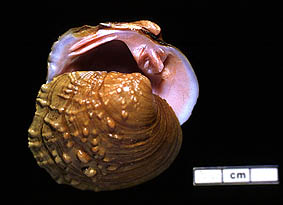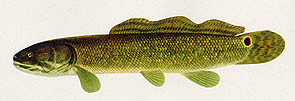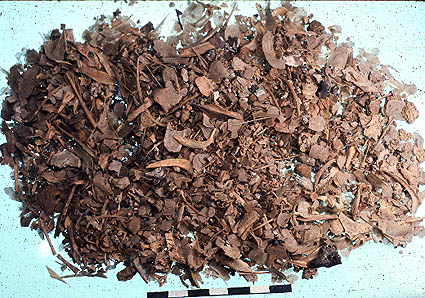 Purple wartyback freshwater mussel.
Purple wartyback freshwater mussel.
The "lazy days of summer" offered household members many opportunities to acquire aquatic resources of all types (e.g., fish, aquatic turtles, freshwater mussels, waterfowl, wading birds). Harvesting fish from lakes and sloughs was probably easier during the summer as waters receded trapping large quantities of fish in small shallow pools. The quantity of fish caught in these small pools should not be underestimated. Historic Euroamerican accounts relate the gathering of fish in the American Bottom by the basketload.

